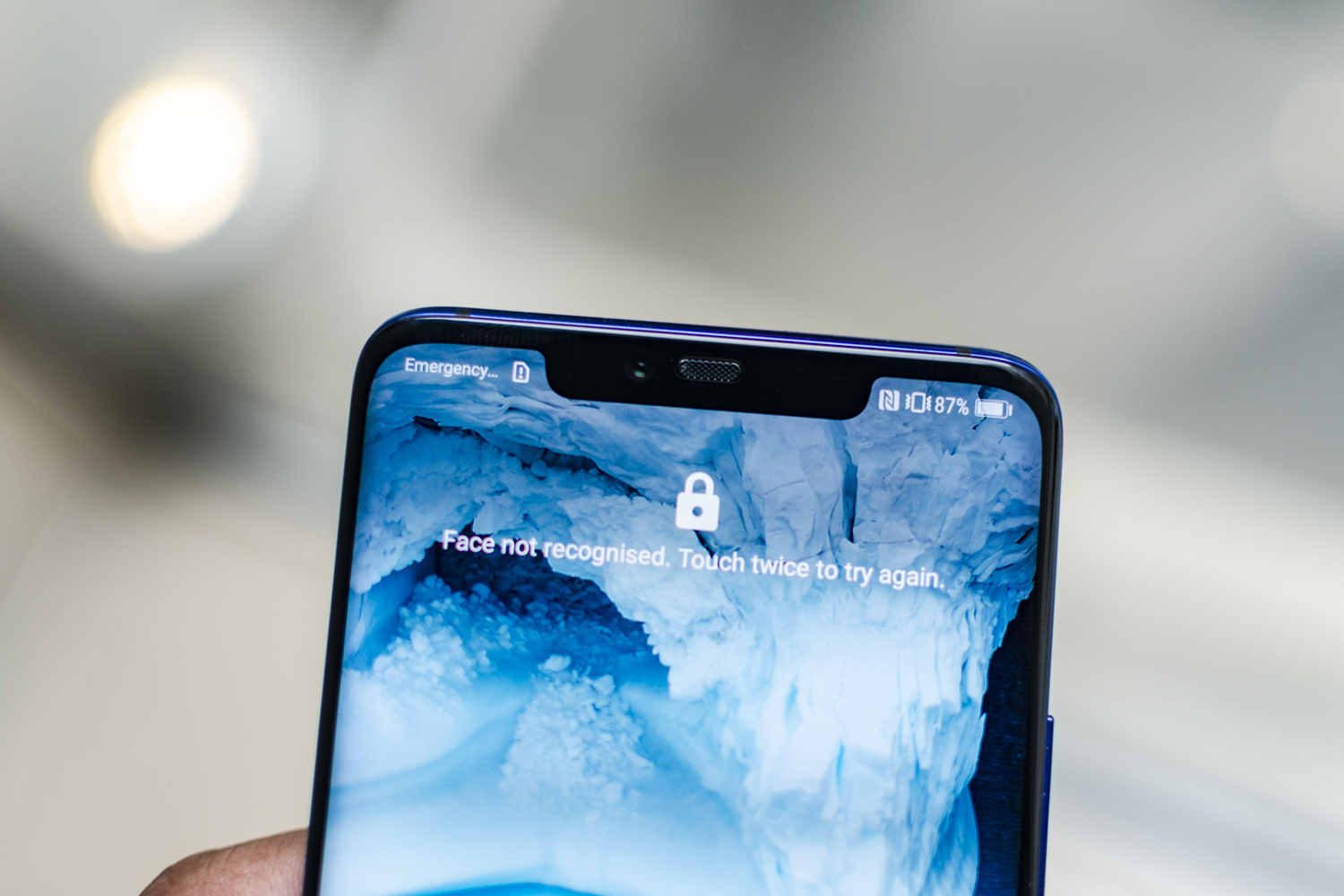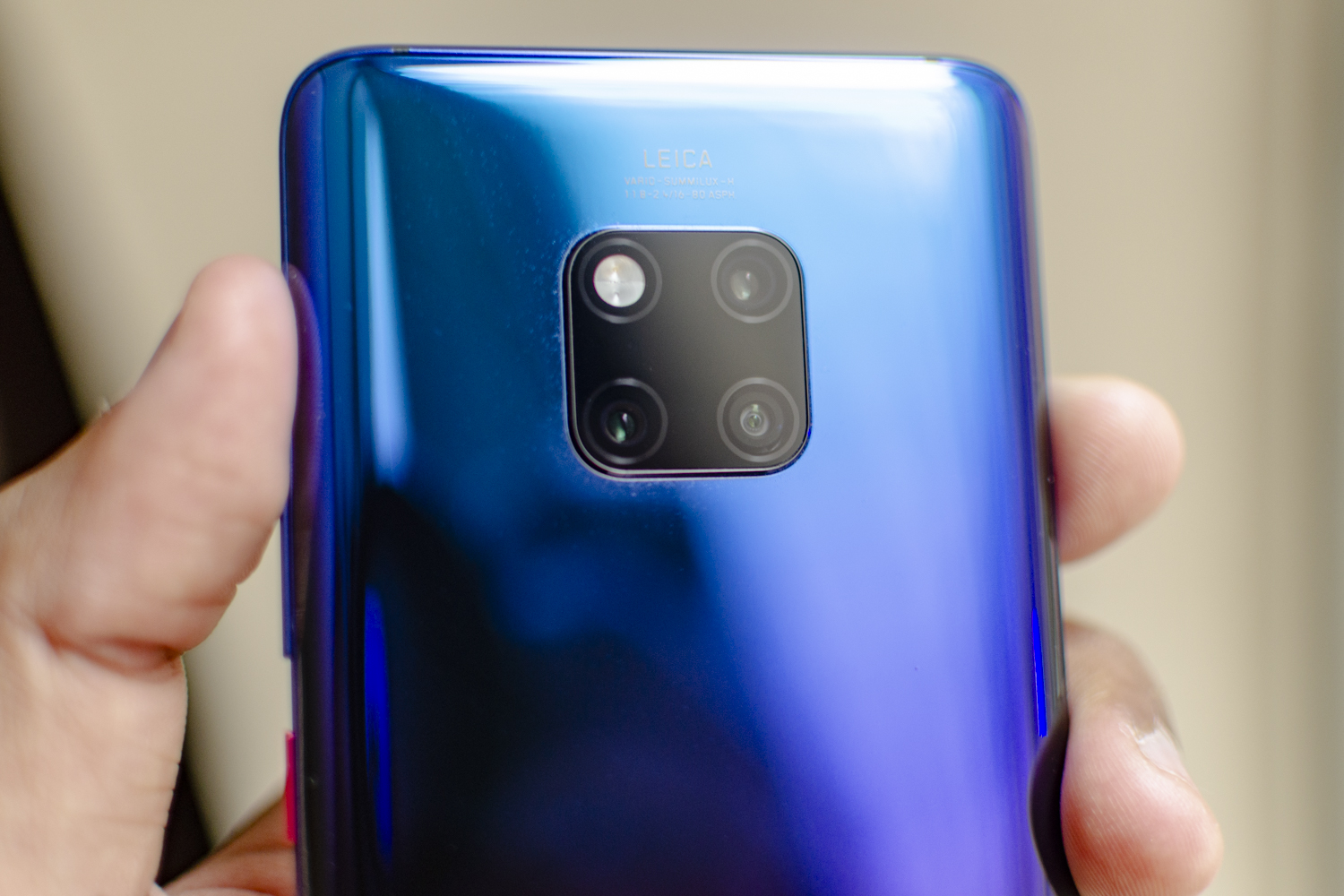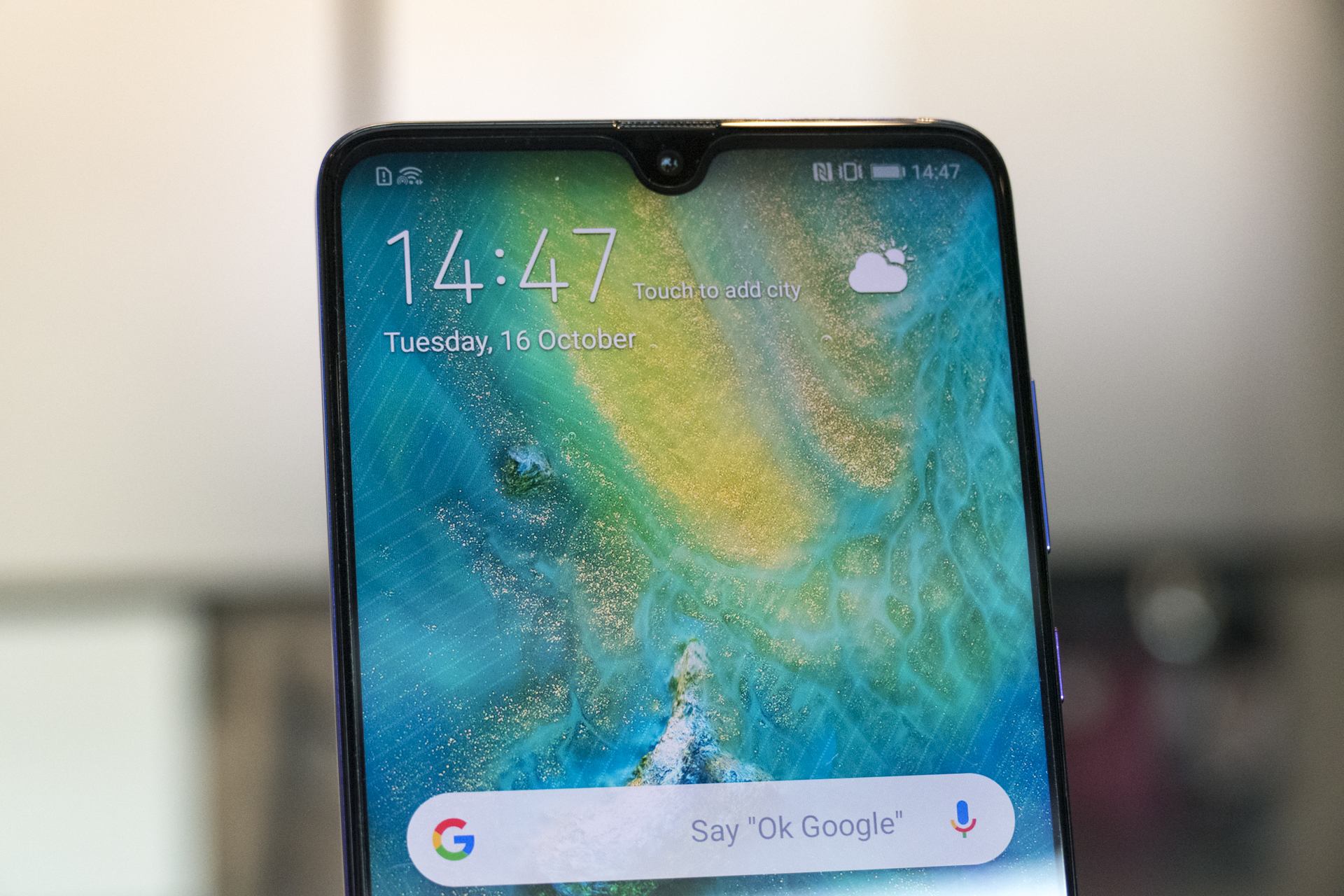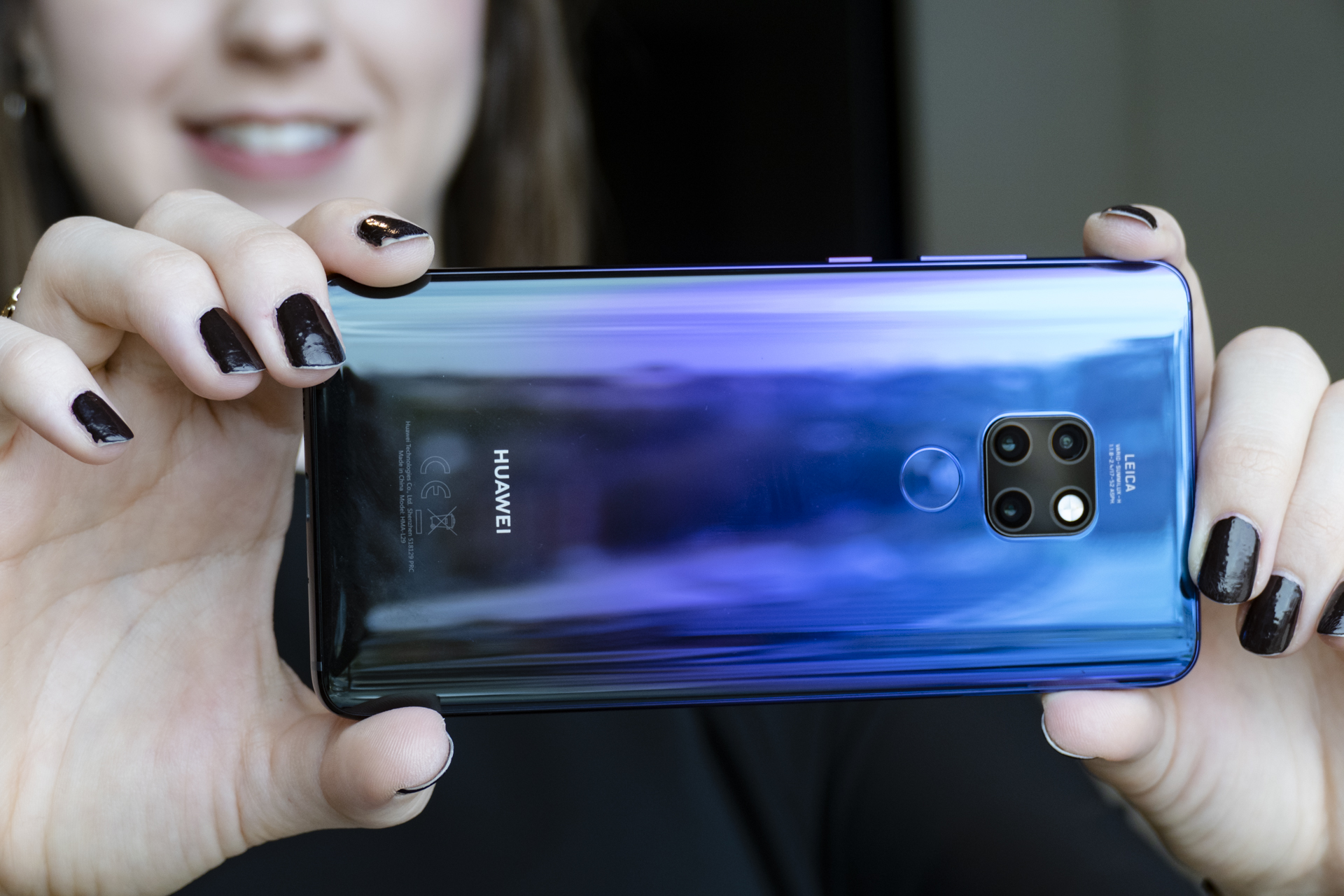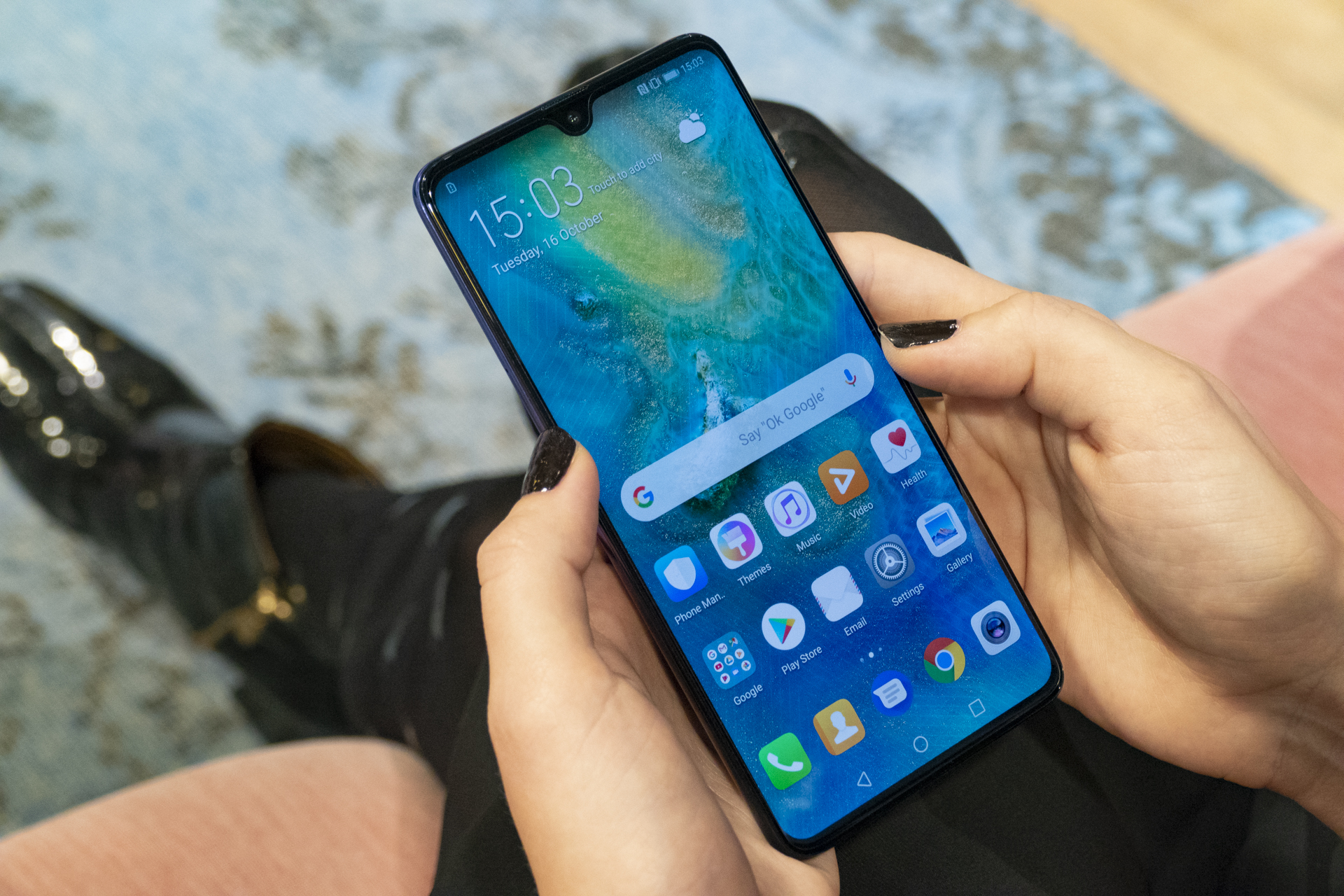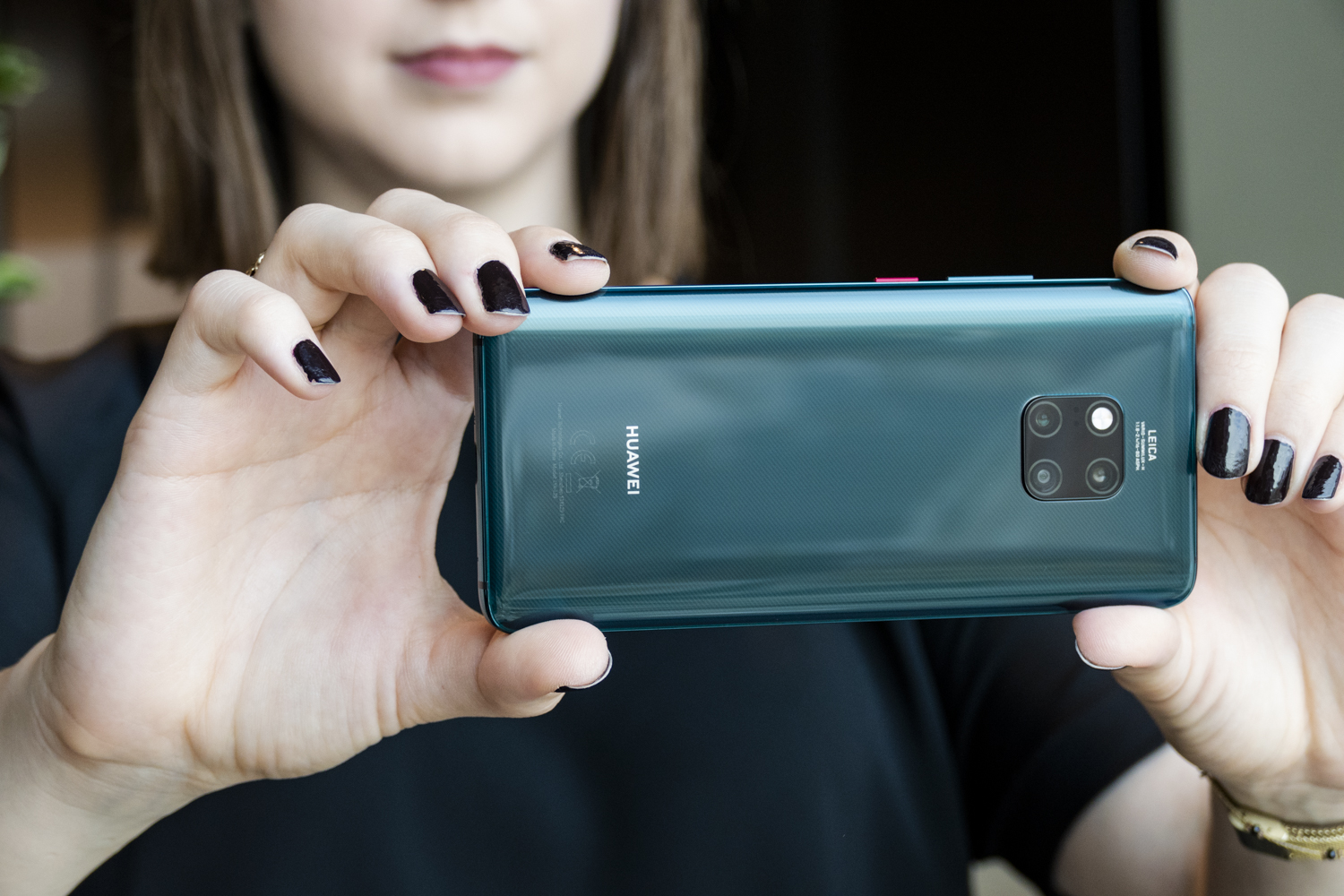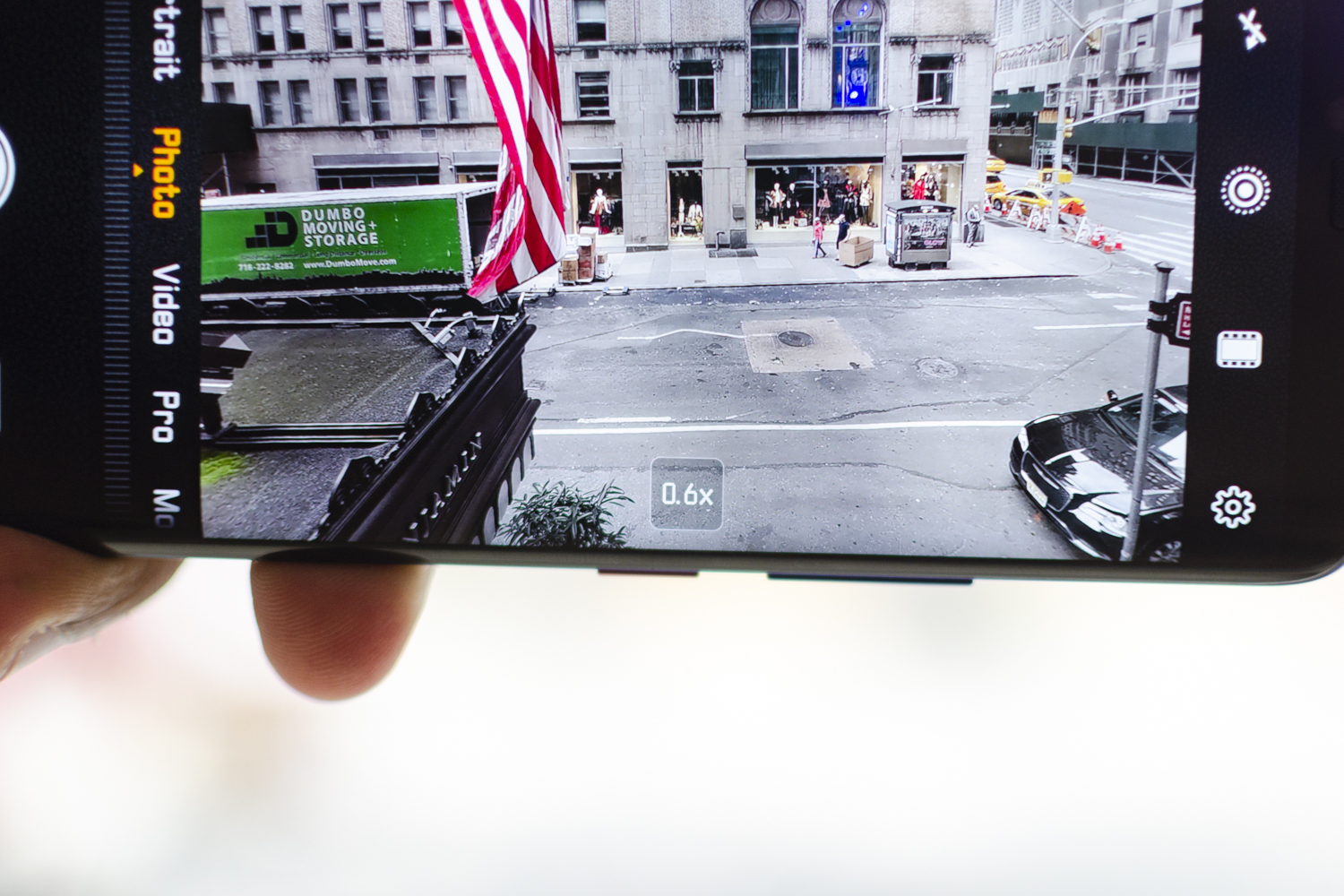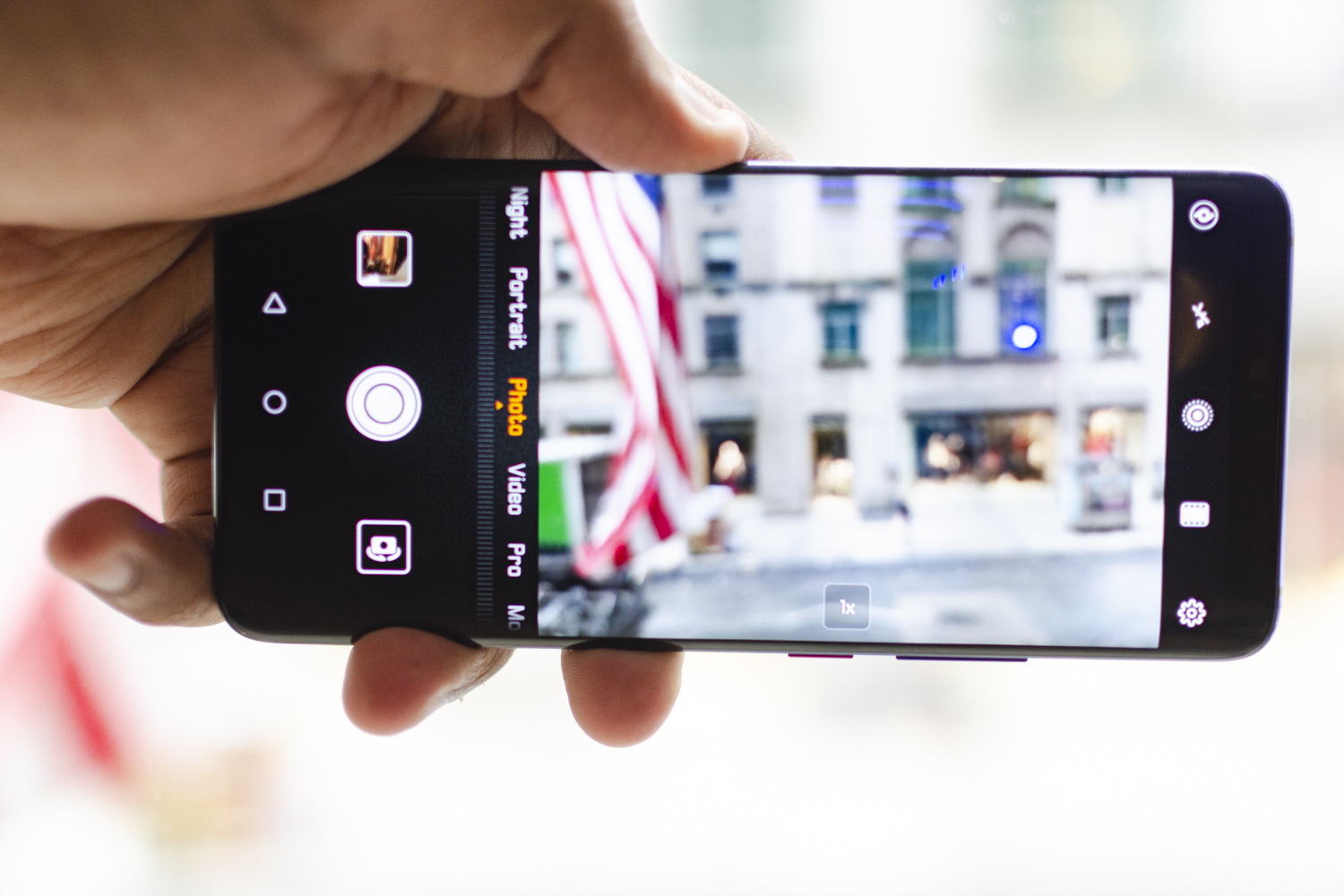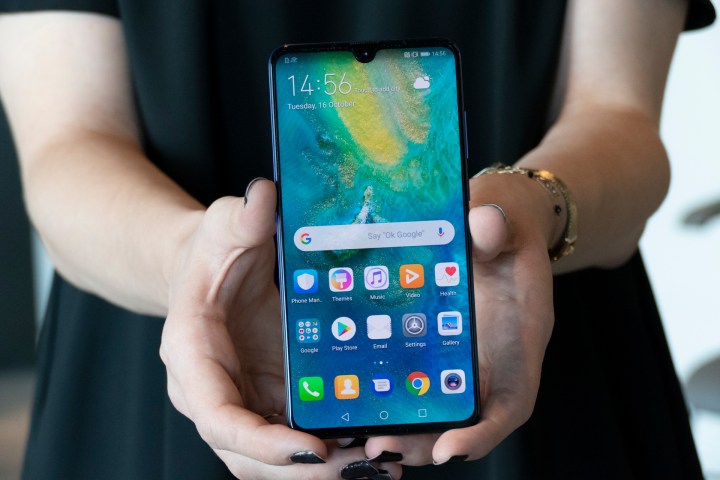
Huawei is on a roll. The Chinese company produced the hit Huawei P20 Pro smartphone at the start of 2018, which earned praised for its excellent camera and beautiful design. But Huawei’s not done yet, and it ended the year by revealing the Huawei Mate 20 range. The Mate 20, Mate 20 Pro, and Mate 20 X follow the impressive Mate 20 Lite and introduce Huawei’s latest hardware and beautiful design.
Here’s everything you need to know about the Huawei Mate 20, Mate 20 Pro, and the supersized Mate 20 X.
Updates
Mate 20 Pro rumored to get two Chinese New Year variants
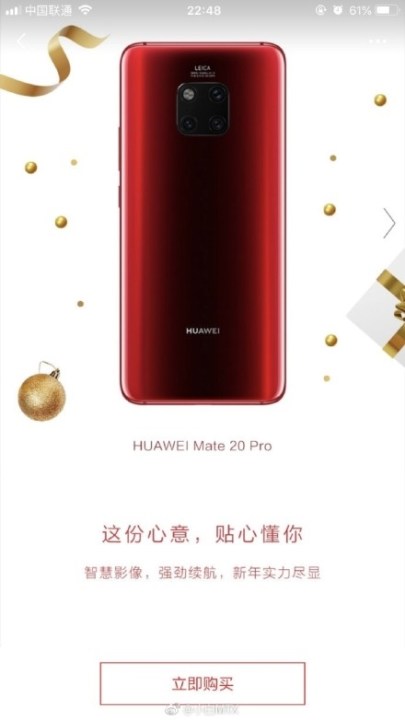
The west may have celebrated New Year already, but it’s not due in China until February — and there might be two new editions of the Huawei Mate 20 Pro to celebrate it. According to MyDrivers, a special Fragrant Red and Comet Blue Mate 20 Pro have been spotted on Chinese microblogging site Weibo. An image has been leaked of the Fragrant Red option, but the only apparent evidence of the Comet Blue variant is apparently from source code. Still, Chinese companies love to celebrate Chinese New Year, so it’s likely we’ll see at least one of these new colors launched in China come February.
Huawei confirms the Mate 20 isn’t coming to the U.S.
The Huawei Mate 20 is clearly one of the best Android phones of the year — but unfortunately it’ll be very hard to get the device for yourself if you live in the U.S. The news comes from a report from Business Insider in which a Huawei spokesperson confirmed that the company won’t be selling the device in the U.S. If you really want the phone, it’s possible you might be able to find it through some online retailers — but given the fact that the U.S. sometimes uses different network frequencies and technologies, you’ll want to carefully check on network compatibility before you buy.
Design and display
Huawei’s designs have always been in line with the latest mobile trends, and the Mate 20, Mate 20 Pro, and Mate 20 X are no different. You’ll find glass with gently curving sides laid over solid aluminum frames, and notches cut into both displays — but there are some fairly significant differences between Huawei’s latest flagships and 2018’s biggest trends.
The most obvious change from the norm is the placement of the camera lenses on the back of the phone. While the use of three lenses is becoming more commonplace, having been introduced in Huawei’s own P20 Pro, and continued in the LG V40 ThinQ, it’s the positioning of the lenses that is now more interesting than the number. Rather than a horizontal or vertical line, the Huawei Mate 20 series’ three lenses are formed into a 2-by-2 box along with the camera’s flash unit as the fourth member, forming a distinctive square. In a world where flagship phones are looking startlingly similar, this simple change makes the Mate 20 range stand out from the crowd.
The glass on both phones has also seen some changes. While both phones still sport Huawei’s magical color-changing glass backs, a “featherline” pattern has been added to both phones. This pattern helps to decrease the visual impact of greasy fingerprints on the back of the phones — hopefully ending this common scourge of glass phones. Huawei has also added an extra layer to the back as well, something referred to as “vinyl tactility.” This layer increases grip significantly on the back of the phone, while still permitting the phone to retain the premium feel of pure glass.
Flip the two phones over and you’ll find some differences to set them apart from one another. The Mate 20 is equipped with a tiny Dewdrop notch cut into a 6.53-inch RGBW HDR display, running a 2244 x 1080 resolution in an 18.7:9 aspect ratio. The Mate 20 Pro is a slightly smaller phone, but rocks an impressive 6.39-inch curved OLED display, running a 3,120 x 1,440 resolution in a 19.5:9 aspect ratio. The Pro model also sports a notch, but it’s cut much wider to accommodate an advanced 3D depth-sensing array built into the front of the phone. The Mate 20 X is the largest of the three phones by a significant margin. It’s equipped with a huge 7.2-inch HDR display, and emulates the look of the Mate 20, complete with Dewdrop notch.
You’ll find a fingerprint sensor on the back of the Mate 20 — but it’s missing on the Mate 20 Pro. Instead, Huawei has incorporated fingerprint scanning tech into that phone’s OLED display. This is definitely the mobile world’s next major advance, and it’s the first time we’ve seen Huawei put it into one of its mainstream phones. Huawei first tested out the tech in the Porsche Design Huawei Mate RS, and it’s been revamped since that first buggy release.
Only the Mate 20 Pro should be able to survive a slip into the pool, with IP68-rated water-resistance. The Mate 20 is only rated at IP54, and the Mate 20 X is rated for IP53, and can only withstand splashes. As a modern flagship phone, the Mate 20 Pro lacks a headphone jack, while the venerable port is still present on the less advanced Mate 20 and Mate 20 X.
The Mate 20 series phones will be available in five colors from release — Black, Twilight, Midnight Blue, Emerald Green, and Pink Gold.
Specs and battery
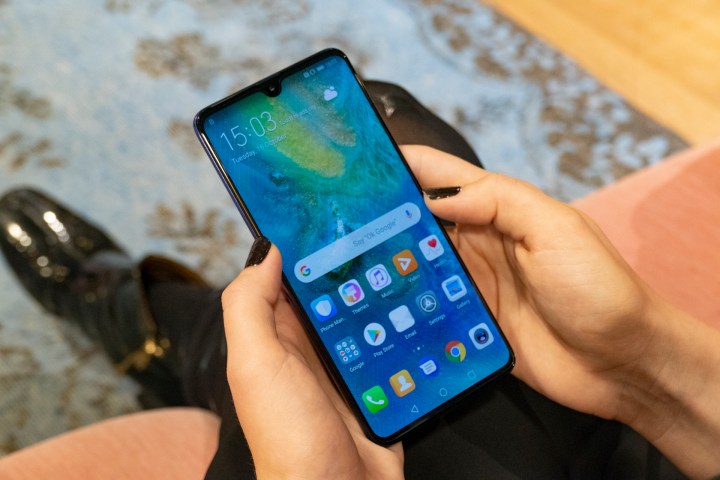
While Huawei eschews the year’s usual Snapdragon 845 processor for its flagship phones, its own proprietary Kirin processors have usually kept up with the curve, providing great performance.
Key Specs
- CPU: Kirin 980
- Memory: 4/6GB (Mate 20), 6GB (Mate 20 Pro & Mate 20 X)
- Storage: 128GB
- Expandable storage: Up to 256GB via Huawei’s nano memory card
- Screen size: 6.53-inches (Mate 20), 6.39-inches (Mate 20 Pro), 7.2-inches (Mate 20 X)
- Resolution: 3120 x 1440 (Mate 20 Pro), 2244 x 1080 (Mate 20 & Mate 20 X)
- Battery: 4,000mAh (Mate 20), 4,200mAh (Mate 20 Pro), 5,000mAh (Mate 20 X)
- Size: 158.2 x 77.2 x 8.3 mm (Mate 20), 157.8 x 72.3 x 8.6 mm (Mate 20 Pro)
- Weight: 188g (Mate 20), 189g (Mate 20 Pro)
- Operating system: EMUI 9 (over Android 9.0 Pie)
The Mate 20 series presents the first Huawei phones to feature the new Kirin 980, the next advance of Huawei’s processor tech. It’s an eight-core processor, and Huawei’s first built on the 7-nanometer process — basically, it’s super-small. The 980 consists of four little cores that handle low-intensity tasks, two middle cores for more demanding tasks, and two advanced cores that will blast through the most demanding of apps and games. Huawei claims this new processor boosts speed by 20 percent and power efficiency by 40 percent when compared to the older Kirin 970.
But it’s not just about raw power. Huawei is continuing its drive toward an A.I.-powered future, and has included two neural processing units (NPUs) inside the heart of the Kirin 980. The Kirin 970 also boasted a single one of these cores, but Huawei claims that these two newer NPUs outstrip the older NPU by 134 percent in performance, and 88 percent in power efficiency. Thanks to this massively boosted capacity, the Mate 20 range will do an awful lot more in the NPU, with support for real-time image processing, and object recognition and segmentation — not only in photos, but also in video.
You’ll get the choice between 4GB of RAM and 6GB on the Mate 20, while the Mate 20 Pro and Mate 20 X will ship with 6GB as standard. Regardless of which model you pick, you’ll be getting 128GB of onboard storage — with the option of boosting that by up to 256GB via expandable storage. However, it’s not like regular MicroSD expansion — Huawei is pushing a new proprietary nano memory card for some reason, so your trusty old MicroSD won’t work.
You’ll find huge batteries backing up these powerful phones. The Mate 20 comes with a 4,000mAh battery, while the Mate 20 Pro goes one better with a 4,200mAh battery. We’ve seen incredible two-day battery life from past Huawei flagships, and we’re expecting similar performance from both of these.
The Mate 20 X takes it even further, with a massive 5,000mAh battery to power the huge 7.2-inch display. The Mate 20 X also comes with an innovative new cooling system that uses a combination of graphene film and a vapor chamber to funnel heat away from the battery and CPU — which means the Mate 20 X should be able to keep on ticking without dropping performance or damaging the phone’s internals.
Huawei’s SuperCharge fast charging is back, too, and Huawei claims the 40W charger included with the Mate 20 Pro will charge up to 70 percent battery in just 30 minutes. The Mate 20 and Mate 20 X come with a lower powered 22.5W charger, but we’re still expecting incredibly fast charging. For comparison, the iPhone XS ships with a 5W charger, giving you an idea of how powerful these chargers are.
You’ll get 15W fast wireless charging support for both phones, which Huawei claims is 200 percent faster than wireless charging on an iPhone X. There’s even more impressive tech included in the Mate 20 Pro though — it will be able to wirelessly charge other wireless charging devices. This feature has been rumored to work with an upcoming pair of Huawei wireless earphones — the Freebuds 2 Pro.
Software and special features
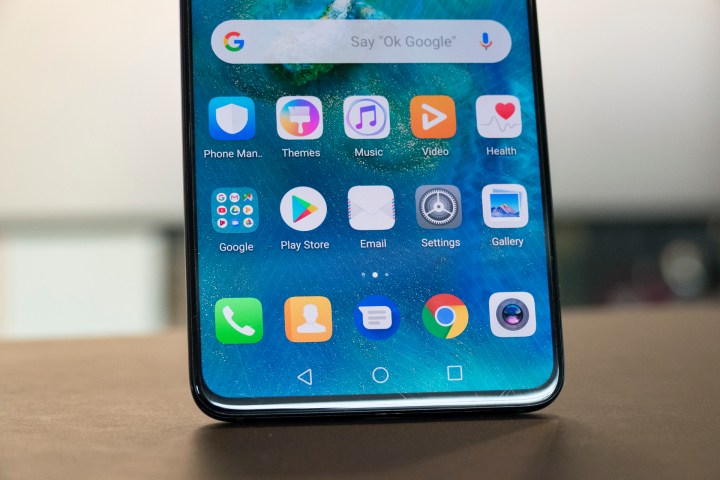
Like all of Huawei’s phones, the Mate 20 range comes with Huawei’s customized Android skin — Emotion UI (EMUI). It’s certainly not the phone for Android purists, as EMUI is one of the more overtly different Android skins, and some may balk at the iOS-like style added. Still, it has improved greatly over the years, and it’s an operating system we’ve grown to enjoy using.
Surprisingly the Mate 20 and Mate 20 Pro will launch with Android 9.0 Pie‘s version of EMUI already installed. Customized Android skins like EMUI usually come sometime after a major Android release, and it’s surprising that Huawei has managed to launch EMUI 9 so fast when other manufacturers are lagging behind.
Like Android 9 Pie, EMUI 9 has seen some major changes and tune-ups. Settings have been hidden away to reduce the complexity of the system, and more intuitive touch settings have been added to make controlling the phone much easier than before. It’s faster, too — Huawei says starting an app has been sped up by up to 51 percent, while smoothness inside apps has been boosted by 42 percent. Huawei’s throwing shade, too, claiming that the Mate 20 range is 400 ms faster on average than the Galaxy Note 9 at starting an app.
Huawei’s also worked hard to reduce the level at which the Mate 20 range will slow down over time. Entropy is a fact of life, but the struggle against it is what defines life — and by that barometer, Huawei has done a terrific job in reducing the rate at which a phone slows as it ages. While it’s impossible to prove in practice until the phones have been out for some time, Huawei’s simulations say that the Mate 20 should only slow down 5 percent after 18 months. By comparison, Huawei’s simulations claim the Note 9 will slow by 28 percent in the same period.
Huawei’s desktop mode will also be making a comeback in the Mate 20 range, so you’ll be able to plug your phone into a display to get a PC-like experience. An improved GPU Turbo 2.0 mode is also included, which should boost gaming performance even further, and Huawei boasts of 22 percent higher stability and 14 percent more power efficiency compared to the same games on the Galaxy Note 9. A lot of Android 9.0 Pie’s biggest features will also be available, including Digital Wellbeing and Wind-Down mode.
Camera
The Huawei P20 Pro is one of the world’s best camera phones, and we’re expecting that the Mate 20 and Mate 20 Pro will strongly follow Huawei’s reputation for high-quality photography.
As mentioned earlier, you’ll find three Leica lenses on the back of the Mate 20 and Mate 20 Pro — a wide-angle lens, an ultra wide-angle lens, and a telephoto lens. However, you’ll find different tech depending on which phone you pick up.
The Mate 20’s triple-camera system is comprised of a 16-megapixel ultra wide-angle lens with an f/2.2 aperture, a 12-megapixel wide-angle lens with an f/1.8 aperture, and an 8-megapixel 2-times telephoto zoom lens with optical image stabilization (OIS), and an f/2.4 aperture. The Pro model sports some bigger numbers, with a 40-megapixel wide-angle lens with an f/1.8 aperture, a 20-megapixel ultra wide-angle lens with an f/2.2 aperture, and an 8-megapixel 3-times telephoto zoom lens with OIS and an f/2.2 aperture.
It’s a similar set-up to the one we saw in the P20 Pro, with the exception that the pure monochrome lens has been dropped in favor of an ultra wide-angle lens. According to Huawei, the monochrome data was being used less than it expected, so the dedicated lens was dropped. But don’t worry, monochrome is still available as a software feature. The new ultra wide-angle lens offers a great focal length for macro shots as well as with wider viewing angles, so it’s likely Huawei’s made a strong change here.
A.I. is central to the performance of the Mate 20 range’s camera, and Huawei has pushed the boundaries even further. Named the “Thinking Lens”, A.I. will be able to control even more aspects of your camera, making it even easier for you to get great shots. While you can still manually swap between lenses, the A.I. will be able to automatically swap to the ultra wide-angle lens when it thinks it’s needed. A.I. will also be able to recognize the primary object in a camera to keep it in focus, and will be able to apply cinematic effects with A.I. — like a Sin City-esque effect that keeps people in color, but shifts the surroundings to black and white.
You’ll find the same 24-megapixel selfie lens in the front of each phone, but the Mate 20 Pro also comes with a much-improved face unlocking feature that uses 3D depth-sensing tech like the iPhone XS. The larger notch on the Mate 20 Pro houses a huge amount of new tech to enable this, including an infrared camera, dot projector, and time-of-flight proximity sensors. The already snappy unlocking speed has also been increased, and it will also recognize you if you’re wearing a hat, or have spontaneously grown a beard. You’ll also be able to use your face to access your new Huawei Password Vault, which stores passwords for your apps similar to Google’s Autofill.
Porsche Design Huawei Mate 20 RS
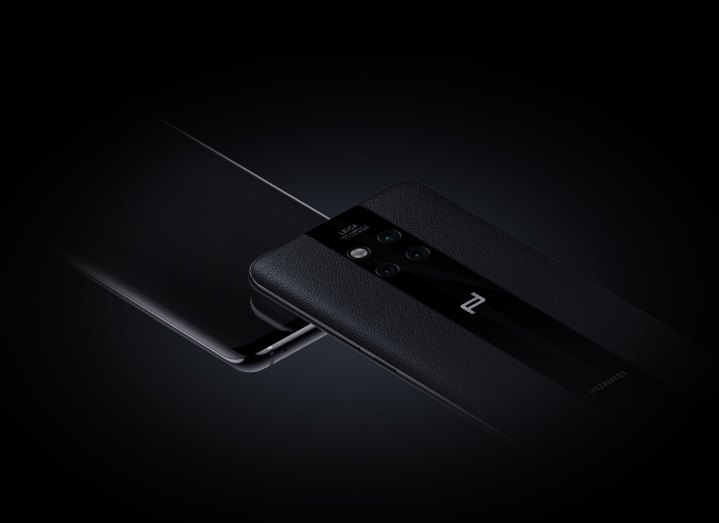
Huawei is also continuing its partnership with Porsche, and is launching a super-premium version of the Mate 20 Pro with Porsche’s branding.
You’ll still find the same Kirin 980 processor inside the special Porsche branded Mate 20 Pro, but you’ll also find 8GB of RAM, and you’ll also get the choice between models with 256GB and 512GB of onboard storage. The in-display fingerprint sensor from the Mate 20 Pro is included, and so is the advanced 3D sensing face recognition. The Mate 20 Pro’s triple-lens camera is there, too, but the battery has seen a decrease to a smaller 2,940mAh capacity.
There’s a bigger difference on the outside of this device though. The all-glass design of the Mate 20 Pro is out — instead, the Porsche Design Huawei Mate 20 RS has a central racing stripe of glass, flanked by soft and luxurious artisan leather. This leather adds grip to the device, and a super-premium feel. It’s an utterly gorgeous device — but it has a price tag to match. The 8GB/256GB model starts at an eye-watering 1,695 euros (around $1,970), and rises to 2,095 euros (roughly $2,430) for the 8GB/512GB model.
Release date and price
The Huawei Mate 20 and Mate 20 Pro is now available in the European Union, the U.K., and from Huawei’s website. The Mate 20 will start from 799 euros (roughly $930), while the Mate 20 Pro is more expensive, coming in at 1,049 euros (roughly $1,220). The supersized Mate 20 X will set you back 899 euros (roughly $1,050).
Unfortunately, Huawei won’t be selling any of the variants of the device in the U.S.
Updated on January 3, 2019: The Huawei Mate 20 Pro may be getting a red and blue variant for Chinese New Year.
